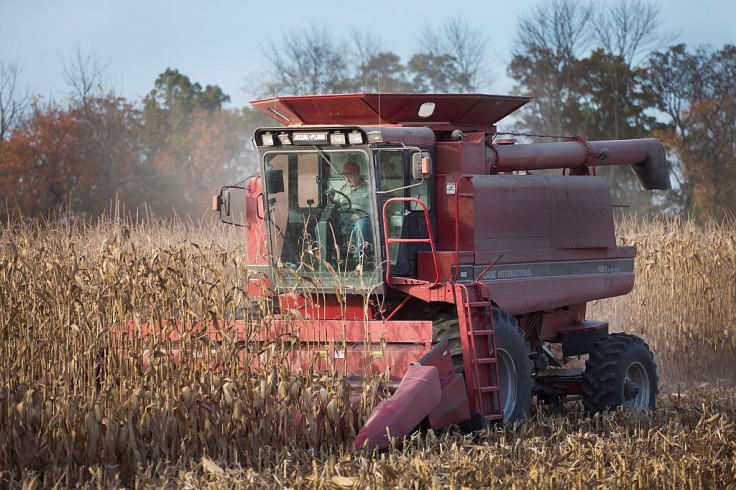Corn Production A Major Cause Of Deadly Air Pollution?

It’s hard to wrap one’s head around the factoid that corn production is a major cause of air pollution in the United States — and might be responsible for up to 4,300 premature deaths annually.
A new study published in the online-only monthly research journal Nature Sustainability affirms that corn production, and agriculture in general, contributes to air pollution through fertilizer application, pesticide production and dust kicked up from tilling, among others. Corn is the largest agricultural crop in the U.S.
Focusing on how corn production contributes to air pollution in the U.S., the study found that corn production accounts for 4,300 premature deaths related to air pollution every year. The study found that ammonia from fertilizer application is the largest contributor to corn's air pollution footprint by far.
"This is an important study because instead of just saying air pollution kills people, it's detailing the specific contributions of different parts of the corn production process to air pollution,” Susanne Bauer, a climate modeler at the Earth Institute at Columbia University who was not involved in the study, said.
Other studies have shown that agricultural practices like fertilizer production, driving tractors and tilling land account for some 16 percent of all human-caused air pollution of a type called PM2.5 (particulate matter 2.5).
PM2.5 is atmospheric particulate matter with a diameter smaller than 2.5 microns. In contrast, a human hair is 50 microns wide. Scientists have long warned that exposure to PM2.5 is associated with cardiovascular problems, respiratory illness, diabetes and even birth defects.
The research team wanted to understand how the various stages of corn production fit into this picture.
"Does most of the impact from corn production happen on the farm or upstream in the supply chain — the locations that feed activities on the farm?" study author Jason Hill, an engineering professor at the University of Minnesota, asked.
Researchers used a detailed life cycle model that describes the different stages of the corn supply chain. They analyzed every stage of the process and calculated which of them contribute to PM2.5 emissions.
With the necessary data in hand, researchers modeled how corn production emissions contribute to air pollution on a county-by-county basis. They also mapped those data onto census data to understand who's exposed to these emissions.
The study estimates that "4,300 premature deaths can be attributed to corn production," said Hill. "That's about a quarter of all (air pollution-related) agricultural deaths. That's significant."
The study also found that 86 percent of PM2.5 emissions occur on farms, with the rest occurring elsewhere in the supply chain. The main cause is fertilizer application.
"Ammonia from fertilizer application accounted for about 70 percent of attributable deaths," Hill pointed out.
Once ammonia is in the atmosphere, it reacts with other particles. It bonds mostly with nitrogen and sulfur oxides to form PM2.5.
Hill estimates air quality-related health damages cost the U.S. $39 billion annually.
The top five corn-producing states -- Iowa, Illinois, Nebraska, Minnesota and Indiana – accounted for 54 percent of the deaths associated with air pollution caused by corn production.
Published by Medicaldaily.com



























